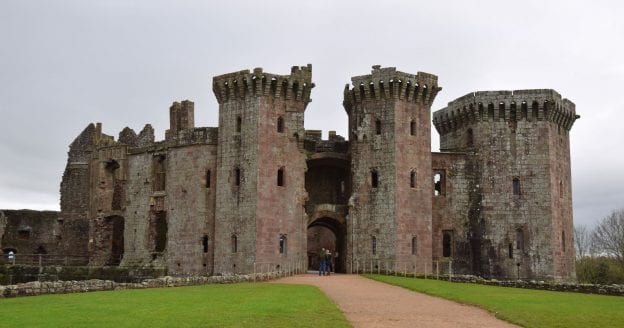(Normal medieval service will be resumed soon, but here is a last one from Welsh Newspapers Online for the moment, found on one of my searches during the recent AALT disruption).
In the few years before Covid 19 came into our lives, there was a lot of activity in relation to the centenaries, first, of militant suffrage campaigns, then the gaining of the vote for (some) women, and then the Sex Disqualification (Removal) Act 1919. (I had a small role in some of that, especially looking at how suffrage campaigning interacted with/clashed with ideas of Cymreictod (‘Welshness’), and, even more specifically, at events in my native town, Abergavenny). I am sure we have all become familiar with certain stories and images over the course of all this activity – iconic shots of the Pankhursts and that one picture of Helena Normanton and Rose Heilbron as silks in particular. It is comforting, in an unjust world, to see a fight in which ‘the good guys’ (sort of) (eventually) won – a reasonably straightforward cause and a definite ‘victory’. Nevertheless, it always seems to me that it is important not only to remember the winners – however impressive they may be – but also those who didn’t manage to smash down walls or transcend the limits placed upon them, those who experienced ridicule without eventual recompense, and who often seem to be lost in shadowy ‘before’, as we focus on the struggles we know to be connected to the attainment of particular equality goals. The thing is, there was a lot of ‘before’, and most of us probably have less in common with the ‘winners’ in these stories than with the shadowy multitude, whatever we may like to think.
It is harder, of course, to tell these other stories. They are likely to be less well documented: it is a question of looking for hints and snippets, and trying to interpret them, often ‘against the grain’ of the particular source, its tone and assumptions. Here is just one, which I found quite telling, and useful in thinking about narratives around the removal of the bar on women working as lawyers.
An article in the Weekly Mail for 11th April 1908 is headed ‘Young Lady Lawyer’.[i] It is not, obviously, about a woman officially employed as a legal professional – that would not be conceded as a possibility until after the passing of the 1919 Act – but about a woman acting in a somewhat analogous fashion. The legal matter was a case at Glamorgan Assizes, between William Watkins and William Burchell Rees (the two men identified geographically, in classic Welsh style – ‘William Watkins, Crofte, Brynamman’ and ‘William Burchell Rees, Godregraig, [=Godre’r Graig] Ystalyfera’) over mineral rights (i.e. coal – it’s South Wales, after all) in Camarthenshire. There were professional lawyers, including a KC, on the plaintiff’s side, but the defendant acted ‘in person’. The newspaper report, however, though it found much of the case ‘dry and uninteresting’, makes much of the assistance given to William Burchell Rees by ‘a young lady’. It notes, but with less interest, the fact that the defendant himself had clearly become familiar with quite a lot of law in this area, preferring to concentrate on the fact that his daughter ‘a girl of about nineteen summers’ was ‘at his side, prompting him’ as he questioned witnesses ‘on the intricate legal and technical details involved’. What an interesting juxtaposition – daughterly duty, properly assisting rather than speaking, and yet (somewhat unnaturally?) conversant with legal and technical detail, to a greater extent than her father, and (shrewishly?) ‘prompting’ him. She also ‘took copious notes’ during the hearing.
The report notes that this was not the only occasion on which ‘Miss Rees’ (we get no more) had been involved in legal business. In another legal case from the same area, she had been said to have ‘extraordinary legal knowledge’, and a certain Mr Abel Thomas had said that he had had ‘great pleasure’ in cross examining her. Furthermore, apparently, one judge (Bray J) was said to have wanted to be in charge of the case, in order to see her, but it had been assigned to another judge. So it sounds as if Miss Rees was a curiosity, a strange prodigy, and perhaps a focus of creepy desire from male lawyers and judges.
Miss Rees was called as a witness, by her father (I warm to him somewhat – he clearly thought highly of her). The judge asked, charmingly, ‘What is she?’, and her father responded ‘I hope some day she will be called to the Bar.’ This was greeted by incredulity on the part of the judge, and laughter in court.
This, then, was the sort of reception given in 1908 to the idea of a ‘young lady’ aspiring to be a professional lawyer. In this environment, the change which would come in 1919 was far from inevitable, and I think that this low-level ridicule, and belittling, and those on whom it was focused, should be integrated into overall narratives of the beginnings of women’s entry into the legal profession. How wearing it must have been. Not only could she not act as a barrister, but even her informal help to her father was met with a fragile hostility and an undermining focus on her as an object of unseemly male fascination.
GS
26/2/2021
Update 4/3/2021
There is a portrait of this ‘interesting Welsh girl’ in another edition of the paper, in April 1908: AN INTERESTING WELSH GIRL.\|1908-04-11|Weekly Mail – Welsh Newspapers (library.wales)
Miss Burchell Rees seems to have been familiar with the inside of a court room, and with her father’s litigation: in a report from 1906, relating to Langer Anthracite Co. (Llandilo) v William Burchell Rees and Edgard Rees, her father is reported to have been accompanied to court by ‘a young girl’: A LLANDILO CHANCERY ACTION|1906-03-24|Evening Express – Welsh Newspapers (library.wales) (I am assuming that it is the same ‘young girl’). Possibly by way of explanation of her presence, her father is reported to have said that he was ‘a Welshman, and rather deaf’ and ‘could not afford counsel’. This seems to be evoking ideas of women as carers, rather than (entirely) presenting her as some sort of legal assistant. Earlier still, as a ‘schoolgirl’, her ‘remarkable knowledge of law’ was remarked, with regard to yet more family litigation, in 1904: STARTLING CHARGESI|1904-08-17|Evening Express – Welsh Newspapers (library.wales).
This last report has some very interesting material on gender and coal mining, and also gives us this: ‘An interesting witness was Florence Mary Rees, a girl of sixteen, who showed such a remarkable familiarity with legal formula [sic] and documents that the judge elicited from her that she studied law as a hobby, had a law library, attended police courts, because that was her delight, and hoped eventually to turn the knowledge she thus acquired to good account by becoming a lady lawyer’. I wonder if she might have been inspired by reports such as those relating to aspiring lawyer (and one who ‘made it’, Ivy Williams: LADY LAWYER AGAIN.I|1903-12-16|Evening Express – Welsh Newspapers (library.wales) It sounds as if Florence’s father was something of a self-taught lawyer himself. More details of the rather bullying questioning of Florence can be seen here: ^°0LGIKL’S KNOWLEDGE OF LAW.|1904-08-20|Weekly Mail – Welsh Newspapers (library.wales)
Certainly, William Burchell Rees was no stranger to litigation: his name appears in several other law-related reports, in the first two decades of the twentieth century, e.g. IA WOMAN’S LOANS.1|1904-08-16|Evening Express – Welsh Newspapers (library.wales) IERASURE IN THE DEED|1906-07-28|Weekly Mail – Welsh Newspapers (library.wales) . If this is also him, he was still at it in 1916: LOCAL COLLIERY ACTION.|1916-11-18|Llais Llafur – Welsh Newspapers (library.wales). He seems to have scandalised the community with his personal life: UNPLEASANT CASE.I – i|1904-08-18|Evening Express – Welsh Newspapers (library.wales)
(Inevitably, by the way, there was a racehorse called ‘Lady Lawyer’ in the 1920s, which has featured heavily in my searches!).
[i] https://newspapers.library.wales/view/3378810/3378816/136/Our%20Lawyer

